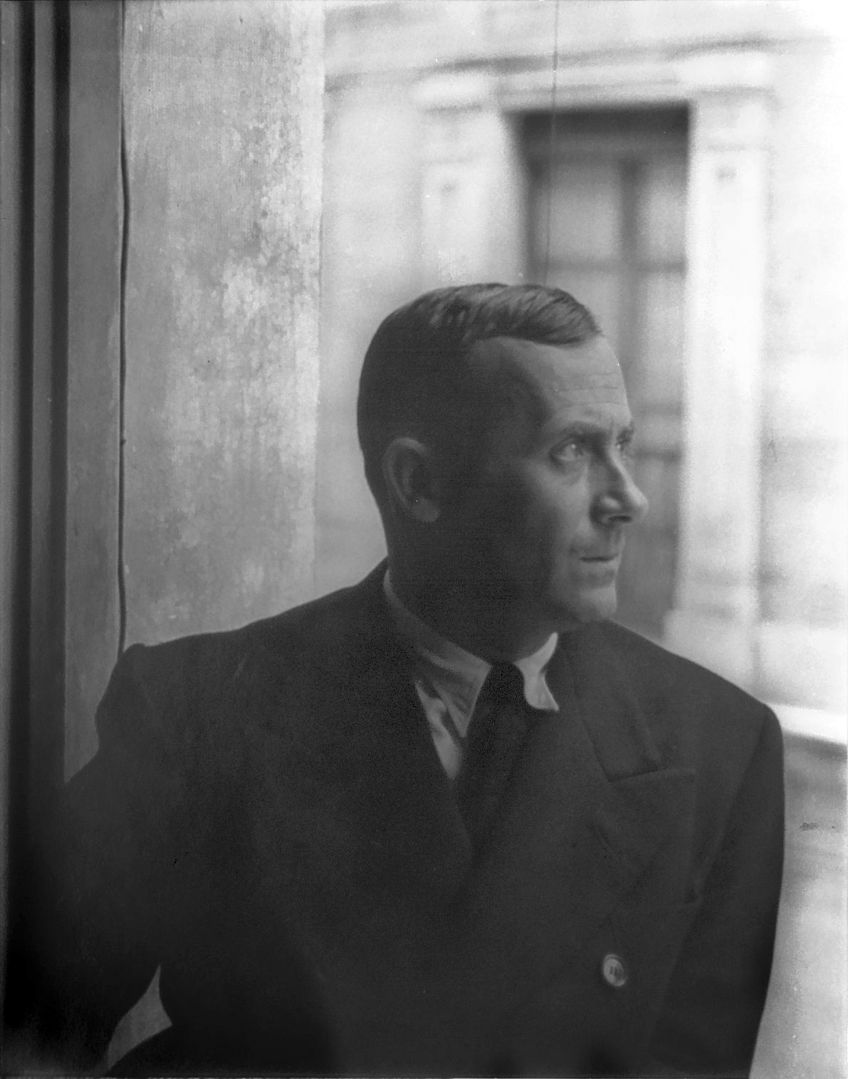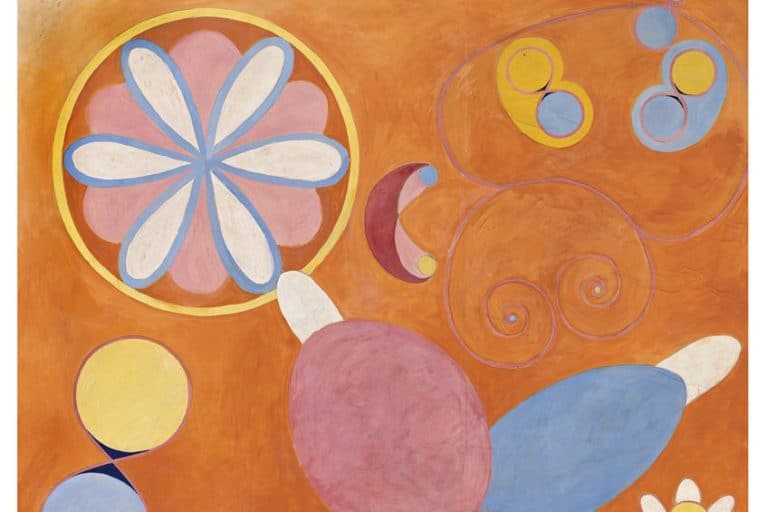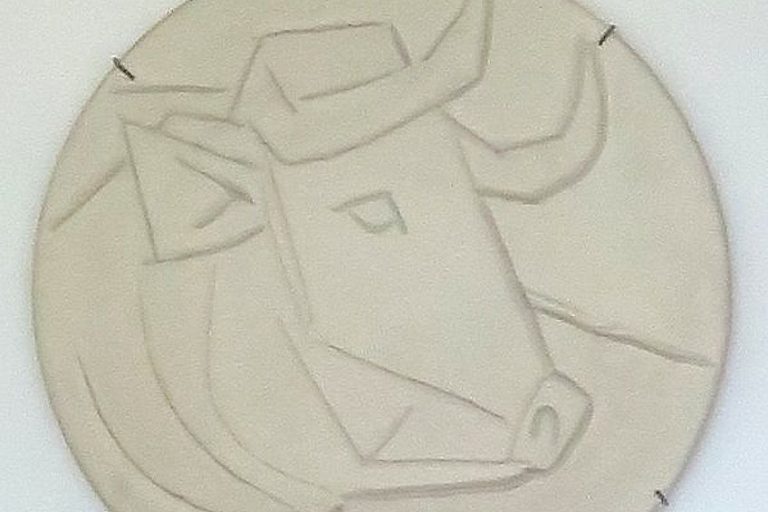“Horse, Pipe, and Red Flower” by Joan Miró – A Painting Analysis
The Spanish painter and sculptor Joan Miró was famous for his biomorphic and somewhat subliminal subject matter. He was not quite a Cubist, nor was he a Surrealist, but he explored the abstract in his own way. This article will look at his Horse, Pipe, and Red Flower painting from 1920.
Artist Abstract: Who Was Joan Miró?
Joan Miró i Ferrà was born in Barcelona, Spain on April 20, 1893, and died on December 25, 1983. He learned art from a young age and studied at the School of Industrial and Fine Arts (the Llotja). His first solo exhibition was in Barcelona in 1918 and in Paris in 1921 at the Galerie la Licorne. He was married to Pilar Juncosa in 1929 and had a daughter Maria Dolors Miró. Some of his artworks include The Farm (1920 – 1921), Harlequin’s Carnival (1924 – 1925), and his bronze sculpture Personnage (1970).

Horse, Pipe, and Red Flower (1920) by Joan Miró in Context
The article below will cover the Horse, Pipe, and Red Flower painting by Joan Miró, starting with a brief contextual analysis around when he painted it and what inspired him, followed by a formal analysis, which will discuss the subject matter and art elements composing it.
| Artist | Joan Miró |
| Date Painted | 1920 |
| Medium | Oil on canvas |
| Genre | Still life |
| Period/Movement | Cubism/Surrealism |
| Dimensions (cm) | 82.6 x 74.9 |
| Series/Versions | N/A |
| Where Is It Housed? | Philadelphia Museum of Art, Pennsylvania, United States |
| What It Is Worth | It was gifted to the Philadelphia Museum of Art by Peter (Henrietta Myers) and her husband, Charles Earle Miller, in 1986 |
Contextual Analysis: A Brief Socio-Historical Overview
In 1920, Joan Miró traveled to Paris for the first time. Reportedly, the disappointment of his solo exhibition in 1918 in Barcelona drove him to seek a more burgeoning art world, which he found in Paris. In Paris, Joan Miró met artists like the famous Pablo Picasso, who pioneered the Cubist art style, and Tristan Tzara, who was a writer, artist, and pioneering member of the Dada art style.
Among many other talented artists, Miró also knew the members of the Surrealist art group, notably André Breton.
Miró was known to have explored the Surrealist art style; however, he did not identify as a Surrealist. With this, Joan Miró’s travels to Paris led him to avant-garde art styles, and notably, this initial trip informed the making of his Horse, Pipe, and Red Flower painting, which he completed when he returned from Paris to his family home in Montroig.
Formal Analysis: A Brief Compositional Overview
The Horse, Pipe, and Red Flower by Joan Miró undoubtedly depict influences from the Cubist and Surrealist art style, to which he had exposure. The formal analysis below will visually describe Joan Miró’s collage painting. It will then analyze the painting according to the elements and principles of art, namely the colors, texture, lines, shapes, forms, and how space is portrayed and utilized.
Subject Matter: Visual Description
In the Horse, Pipe, and Red Flower painting Joan Miró depicts his subject matter as a still-life in a collage-styled composition. It is a colorful rendition of an assortment of seemingly random objects and items on what appears to be a table. The setting appears to be a room of sorts, with most of the items on the table. The room has a floor, which appears blue, and a wall (or what appears to be a wall) that is cream in color with zig-zagged and geometric patterns.
On the table, in the foreground, is an open book, which has been described as the publication Le Coq et Arlequin (“The Rooster and the Harlequin”) (1918) by Jean Cocteau, who was a French writer and multi-talented artist.
To the right of the book is a long white pipe lying at an angle, next to the pipe is a wine glass with a red flower inside it. Behind the wine glass is a mishmash of colorful patterns. It is unclear what these could be if they are anything at all. Placed towards the back of the table is a small white horse, which has been described as a figurine. In the far background is what appears to be an image on the wall depicting a landscape setting. This has been surmised as either being a painting or a window to the outside environment.
Color
Joan Miró utilized a myriad of colors in his Horse, Pipe, and Red Flower painting. There is a combination of primary colors like reds, blues, and yellows, which are also in a variety of tones, for example, the red flower in the wine glass is a deep red. Secondary colors are also evident like green and orange. These are also placed alongside the primary colors, for example in the lower right portion of the composition, notice the red and green of the table overlapped with the brilliant blue of the flooring. The variety of colors creates movement and dynamism in the Horse, Pipe, and Red Flower painting.
Line
As one of the art elements, lines provide the structure of objects or forms, the outline so to say. There are also different types of lines in which Joan Miró’s Horse, Pipe, and Red Flower painting is filled with. There are curved, zigzagged, wavy, and straight lines all occurring in different lengths, from short to long, and orientations, from vertical, horizontal, and diagonal.
An example is the patterned lines to the left of the composition, notice the repetition of diagonal lines placed parallel to one another, almost appearing zigzagged.
Texture
There are a variety of textures in the Horse, Pipe, and Red Flower painting by Joan Miró, from the tactile texture of the paintbrush on the canvas, for example, the blue flooring and areas of coloring on the table. There are implied textures of several of the objects, for example, the lines of paint that give the impression of the horse’s hair or the lighter whites on the wine glass that suggest its shiny surface.
Space
Most of the compositional space to the left side is chock-full, which is contrasted by the emptier space to the left and below the table. Additionally, the whole table is not in view, but only what is on the left side of it. The table is colorful compared to the wall and floor, which creates a subtle sense of depth, however, there appear to be multiple angles simultaneously depicted on the table.
It is as if we (the viewers) are looking down at some of the objects and straight at them. This was characteristic of Cubist collage-styled paintings.
Shape and Form
There are multitudes of shapes and forms in Joan Miró’s Horse, Pipe, and Red Flower painting, from geometric angles of the patterns on the table to the organic (naturalistic) forms of the flower, the horse, and the landscape depicted on the painting or window in the background. Some of the other shapes and forms include the two large oval shapes in the background, the square-like shapes of the patterns on the wall to the right, the triangular shapes created by the patterns along the rim and edge of the table in the foreground, and the spherical form of the wine glass.
There Is More to Miró’s Collage
This article discussed the Horse, Pipe, and Red Flower painting in more detail, briefly exploring where Miró was in his artistic oeuvre when he painted it including a visual description of his subject matter and his dynamic utilization of colors.

“Horse, Pipe, and Red Flower” by Joan Miró is more than what the title indicates; it is an example of the artist’s immersion in new art styles and an exploration of his own identity and tastes. From Cubism to Surrealism, Miró was at the heart of it, while simultaneously forging his own artistic path.
Frequently Asked Questions
Who Painted the Horse, Pipe, and Red Flower?
The Horse, Pipe, and Red Flower (1920) painting is an oil on canvas by the Spanish artist Joan Miró. He painted it in Montroig, which is the village where he frequently lived on his family farm in Spain. It was also painted after his initial visit to Paris, where he met Pablo Picasso and was influenced by the Cubist art style.
What Style Is Horse, Pipe, and Red Flower by Joan Miró?
Horse, Pipe, and Red Flower (1920) is a collage painting by Joan Miró. It is described as Cubist in style due to the collage composition, which was a characteristic of Cubist artists like Pablo Picasso, who Miró met while he was in Paris.
Where Is the Horse, Pipe, and Red Flower Painting Located?
Horse, Pipe, and Red Flower (1920) by Joan Miró is held at the Philadelphia Museum of Art in Pennsylvania, United States. It was acquired in 1986 as a donation from artists Peter (Henrietta Myers) and her husband, Charles Earle Miller.
Alicia du Plessis is a multidisciplinary writer. She completed her Bachelor of Arts degree, majoring in Art History and Classical Civilization, as well as two Honors, namely, in Art History and Education and Development, at the University of KwaZulu-Natal, South Africa. For her main Honors project in Art History, she explored perceptions of the San Bushmen’s identity and the concept of the “Other”. She has also looked at the use of photography in art and how it has been used to portray people’s lives.
Alicia’s other areas of interest in Art History include the process of writing about Art History and how to analyze paintings. Some of her favorite art movements include Impressionism and German Expressionism. She is yet to complete her Masters in Art History (she would like to do this abroad in Europe) having given it some time to first develop more professional experience with the interest to one day lecture it too.
Alicia has been working for artincontext.com since 2021 as an author and art history expert. She has specialized in painting analysis and is covering most of our painting analysis.
Learn more about Alicia du Plessis and the Art in Context Team.
Cite this Article
Alicia, du Plessis, ““Horse, Pipe, and Red Flower” by Joan Miró – A Painting Analysis.” Art in Context. May 19, 2023. URL: https://artincontext.org/horse-pipe-and-red-flower-by-joan-miro/
du Plessis, A. (2023, 19 May). “Horse, Pipe, and Red Flower” by Joan Miró – A Painting Analysis. Art in Context. https://artincontext.org/horse-pipe-and-red-flower-by-joan-miro/
du Plessis, Alicia. ““Horse, Pipe, and Red Flower” by Joan Miró – A Painting Analysis.” Art in Context, May 19, 2023. https://artincontext.org/horse-pipe-and-red-flower-by-joan-miro/.











